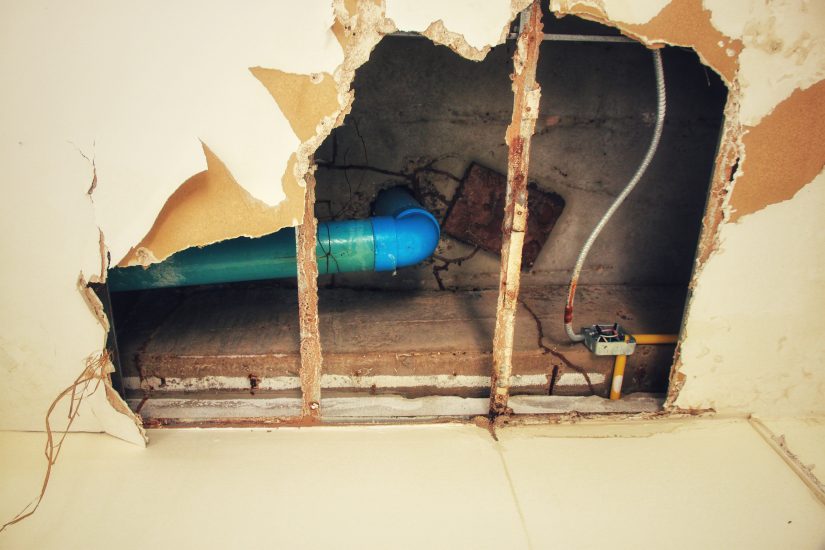
Every homeowner in the Pacific Northwest should know the signs of dry rot. Dry rot and wet rot both wreak havoc in the homes in this region. Unlike wet rot, dry rot does not need as much moisture to spread throughout your home.
Wood rot can quickly ruin the look of your home, pose health concerns, and lead to damage to your building’s structural integrity. If you notice dry rot in your home, you should take care of it immediately to prevent further issues.
Got Rot is a trusted name in dry rot repair, with a dedicated team of experienced Seattle rot repair professionals who can help you effectively remove dry rot in your home. In this blog post, you will learn more about dry rot and how to identify it, the problems it can cause to your health and home, and how to get rid of it.
What Is Dry Rot?
Dry rot, like wet rot, is a fungus, but dry rot is far more aggressive. It feeds on moist or damp wood, turning it brittle, cracked, and crumbly and destroying wooden structures. This wood-destroying fungus impacts the strength, durability, and firmness of wood structures and surfaces in and around your home. Addressing dry rot promptly through dry rot repair is imperative. Moist wood leads to dry rot, and dry rot treatment will likely include pinpointing the source of the excess moisture.
How to Identify Dry Rot Fungus
Dry rot spread can happen quickly, which means it is imperative that you know what to look for when identifying dry rot. Look for deep cracks running along the grain of the wood on your interior and exterior windows, doors, siding, roof, basement, and attic. You may see white or gray growth on the wood that resembles cotton wool. In severe cases, dry rot may advance to looking like a mushroom head.
The ultimate way to determine if you have dry rot is to test the strength of the wood. You can poke it with a screwdriver or your fingers to feel if it is strong and durable or if it’s spongy and soft. When the wood doesn’t feel like wood, it is a surefire sign that you have dry rot fungus in your home.
What Are the Health Effects of Dry Rot Spores?
Wood decay caused by dry rot infestation can cause potential risks to your health if left untreated. Dry rot spores are a health hazard that can cause respiratory issues, especially for anyone who is prone to allergic reactions or asthma.
Dry rot affected wood can release spores into the air in your home, which makes them more difficult to contain. It can then spread, causing dry rot outbreaks in more places within your home. If you notice the signs of dry rot, you should have professional dry rot removal to ensure every trace of it is removed for the health of your family and to keep your home from becoming uninhabitable.
How to Treat Dry Rot
If you notice rotted wood or affected timber in your home, you must take prompt action before dry rot causes respiratory problems and the fungus attacks all the wood in your home. Catching dry rot in the early stages is ideal because it will be easier to contain, but even in advanced stages of dry rot, a professional can assist with a dry rot survey of your home.
Dry rot fungal growth feeds on wood with a high moisture content. In order to treat dry rot, it may involve removing and replacing any building materials or timber affected by this fruiting body of fungus.
Anything that generates moisture should be examined, such as a leaky roof, damaged gutter, a plumbing problem, standing water, or poor ventilation. You must find the source of the water ingress to keep your home free of moisture. Damp conditions are a safety concern for homeowners and building managers alike. When you spot the telltale signs of fungal decay and detect a musty smell, you must act quickly to fix the dry rot problem.
When you catch the early signs of dry rot, you can treat the affected areas rather than the whole building. The first step is to get rid of all the damaged wood. Even wood that seems unaffected but is in close proximity to the damage should be replaced. A wood hardener can then be applied to remaining wood to strengthen it and keep the dry rot from spreading.
After it dries, you can fill it with epoxy, then sand it down and paint it to match the rest of the wood. A house with dry rot is not a pleasant place to live. From damp basements to outdoor decking and wood siding, this fruiting body is a serious problem that requires professional help.

Preventing Dry Rot
Since dry rot is like cancer to a building, you will want to do everything you can to prevent dry rot. The first step is to treat any leaks quickly and clean up the affected area. Anything that can generate moisture should be checked frequently for these fruiting bodies.
Sealants, preservatives, and various materials can help protect your home. If you are building a new home or adding wooden features, consider using pre-treated timber to keep rot from developing. Additionally, keeping up the maintenance of your home will help keep water out, making your home safe from the destruction of dry rot.
Get Professional Dry Rot Removal and Repair
When you have affected timber in and around your home, you should not wait for dry rot repairs. Dry rot can spread quickly, and only professionals know where to check to ensure your home is free and clear of this pesky fungus.
Dry rot is a huge problem for homeowners in Seattle. Now that you know how it can threaten your home’s integrity, call Got Rot to inspect and treat your home for dry rot before it becomes worse.